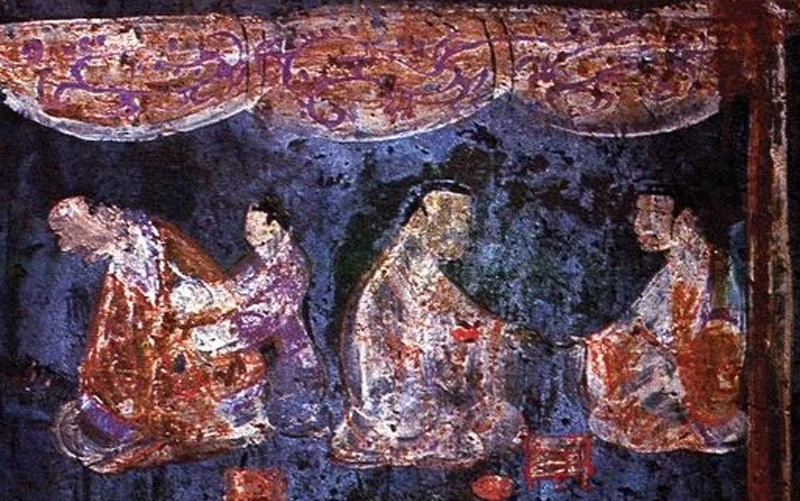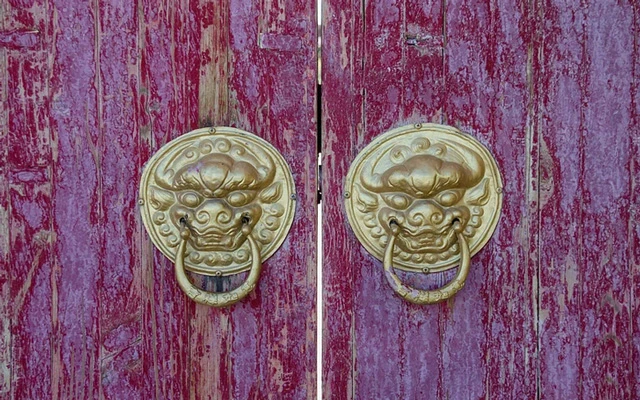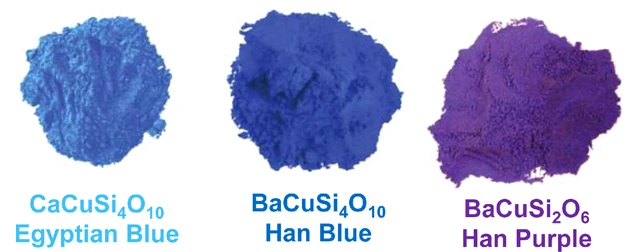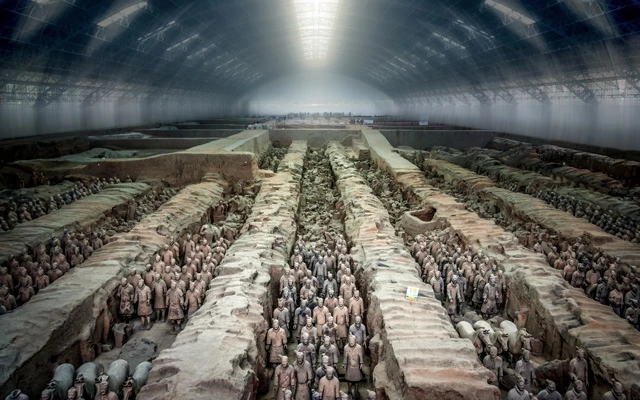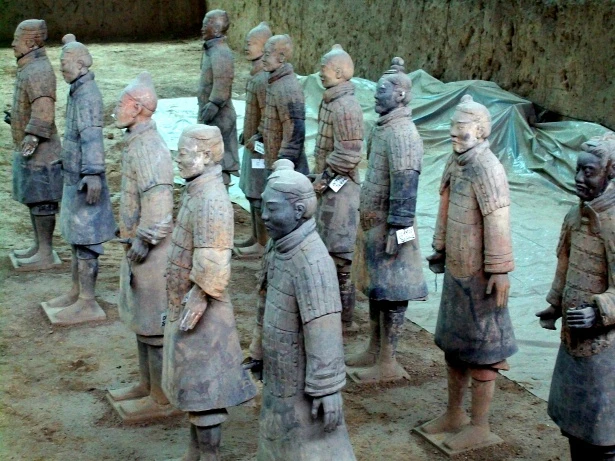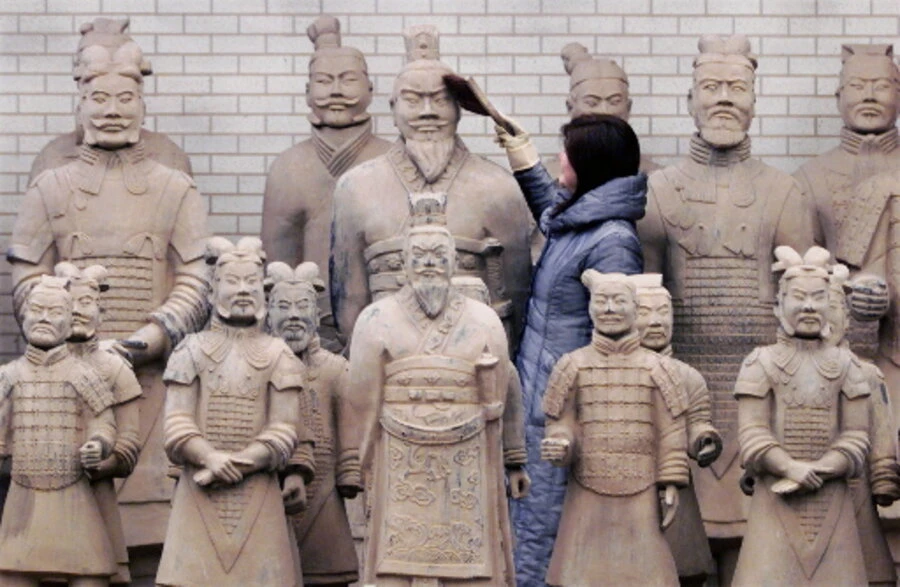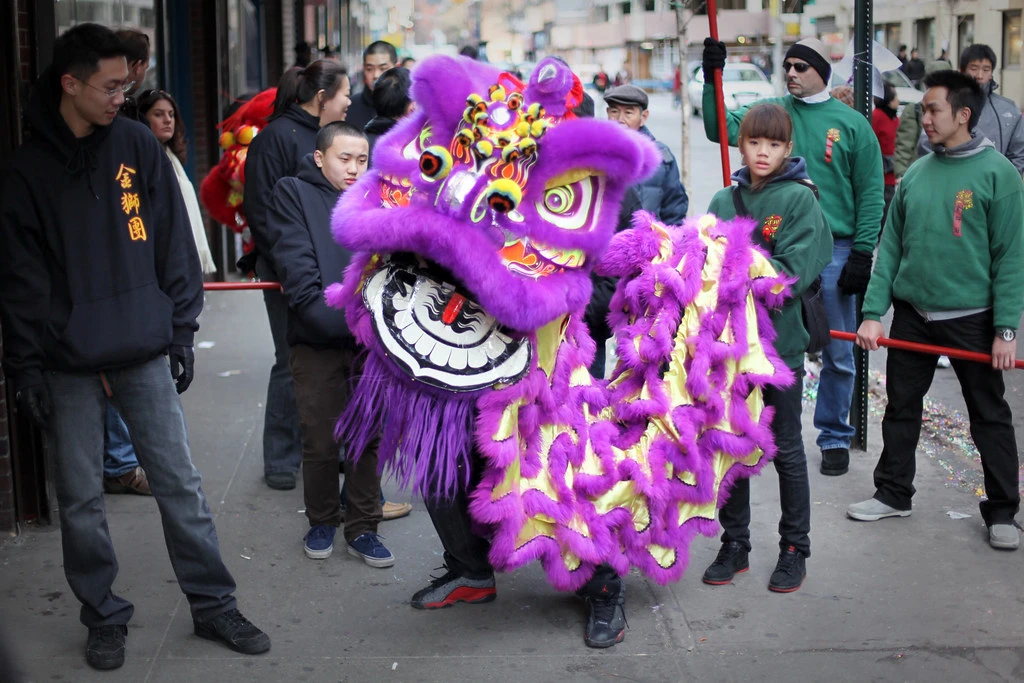Let’s talk about Han purple and Han blue, distant relatives of Han Solo. Or perhaps not. ◑.◑
What are they then? As you may have guessed, these are artificial pigments, synthetic colors, created by the Chinese over 2,500 years ago. They were widely used in ancient artworks - such as wall paintings, for decorating ceramics, metalware, jewelry, clothes, and even the famed Terracotta warriors are painted blue... or purple.
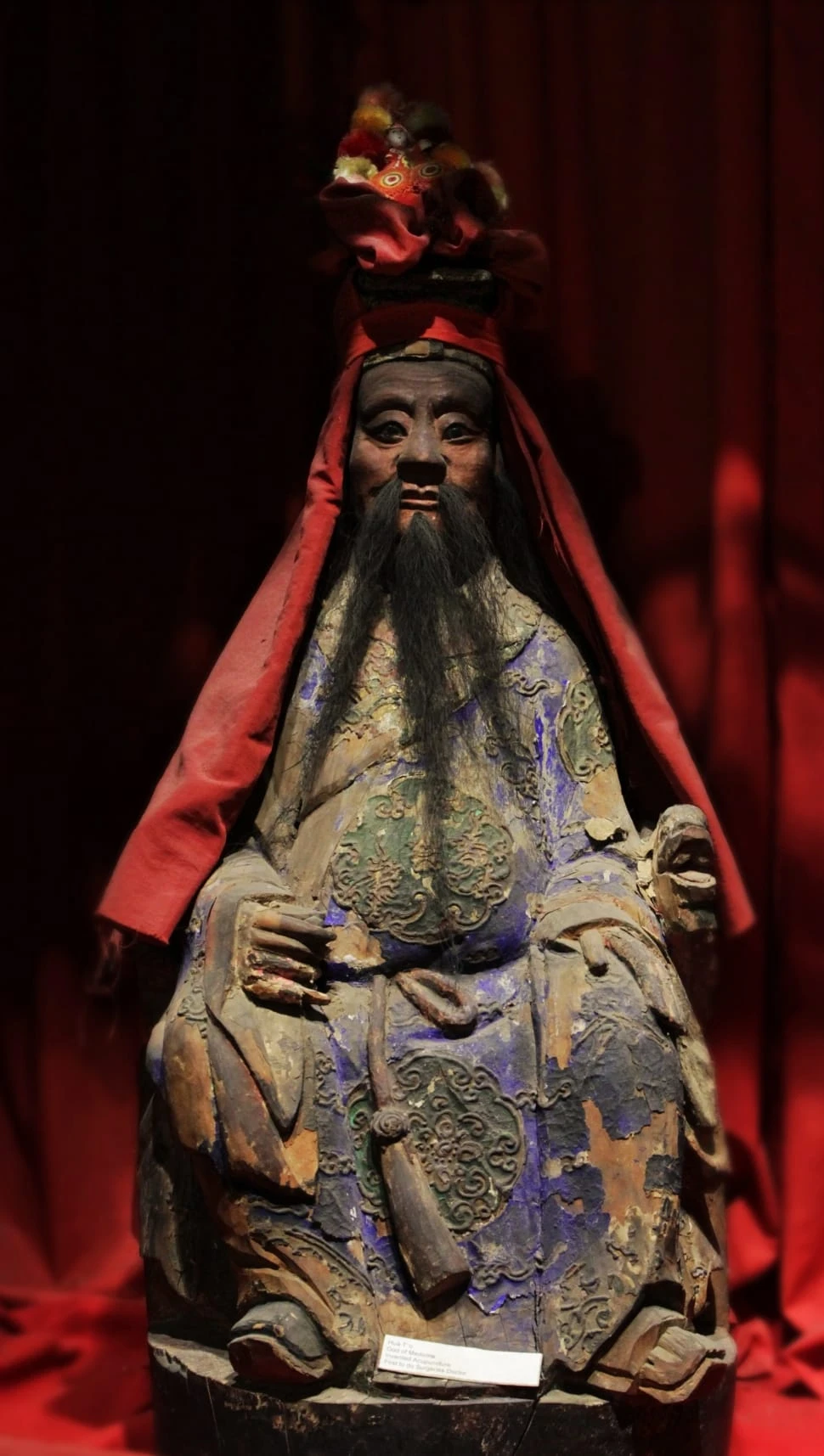
Han purple and Han blue are actually misnamed, as both colors have been found well before the Han dynasty in China, perhaps as early as the Western Zhou dynasty (1045-771 BCE). Therefore, they are often called Chinese purple and Chinese blue instead. Another misnomer is that Han purple, in its pure form, is actually a dark blue, so perhaps Han indigo would be more accurate.
But let's go back in time to ancient China. Colors were obtained through what people could find in nature.
Fun fact: Pigments are made from inorganic materials such as powdered minerals, and are far more durable than dyes. Dyes, on the other hand, are organic compounds traditionally made from plants or animals and are shorter-lasting.
So here they were, using dyes and the same old pigments - most pigments were made by simply grinding up colored stones. Artists were limited by what was "natural" - the only blue available to the Chinese was azurite, and they had no purple. So they decided, you know what, we are going to make it ourselves! But how exactly did the Chinese stumble upon the intricate formula - combining silica (sand) with copper and barium in precise proportions and heating it to about 850-1000 °C - to make Han purple? According to Stanford physicists, Han purple was a by-product of the glassmaking process, as both glass and the purple pigment contain silica and barium.
The process remained a mystery until 1992, when chemists were finally able to identify its composition. Scientist Elisabeth FitzHugh, a conservator at the Smithsonian, was the first to identify the complex synthetic compound that makes up Han purple. It is barium copper silicate, a compound that differs from Egyptian blue only through its use of barium instead of calcium. Han purple has the chemical formula BaCuSi2O6, while Han blue has the chemical formula BaCuSi4O10 and Egyptian blue CaCuSi4O10.
Han purple is chemically and thermally less stable than Han blue. The temperature needed to be high (around 850–1000 °C) and kept at that temperature for long periods. The manufacture of Han purple would have taken around 10–24 hours, while Han blue would have taken twice as long. Prolonged firing causes Han purple to break down and form Han blue. Basically, Han purple is your highly unstable friend who has to be home before midnight, and Han blue is the friend that takes forever to get ready but can stay all night. (I say unstable, but still, Han purple has survived for thousands of years in Chinese tombs and wall paintings.)
The similarities between the colors Han purple and the previously mentioned Egyptian blue led some early researchers to conclude that the Chinese may have learned to make the pigment from the Egyptians. However, this theory has been largely discounted since Chinese purple uses barium and Egyptian blue uses calcium.
Origin of the Anomalous Color of Egyptian and Han Blue Historical Pigments: Going beyond the Complex Approximation in Ligand Field Theory. - M. Moreno, @article{Moreno2016OriginOT, title={Origin of the Anomalous Color of Egyptian and Han Blue Historical Pigments: Going beyond the Complex Approximation in Ligand Field Theory.}, author={Miguel Moreno}, journal={Journal of Chemical Education}, year={2016}, volume={93}, pages={111-117}, url={https://api.semanticscholar.org/CorpusID:101227208} }
After its discovery, the popularity of Han purple peaked in the Qin and Han dynasties (221 BCE to 220 CE) and declined during the Tang dynasty (618-907 CE).
"For hundreds of years in ancient China, Han purple stood alone as a vivid pigment coveted worldwide. The privilege of wearing and bestowing Han purple reflected imperial China’s economic power, technological innovation, and sophisticated chemical expertise" - Finn, P. (2017). Why Purple Disappeared From Ancient China. JSTOR Daily.
Han purple is not only a mesmerizing color widely used in art throughout history, but as scientists discovered, it has fluorescent properties. When exposed to an LED light, it emits powerful rays of light in the near-infrared range. Additionally, quantum physicists from Stanford, Los Alamos National Laboratory, and the Institute for Solid State Physics (University of Tokyo) reported that when Han purple is exposed to extreme cold and a high magnetic field, the chemical structure of the pigment enters a new state called the quantum critical point, in which the three-dimensional material "loses" a dimension.
Ancient "Multi-Dimensional Paint" Found In China? ⬇️
Paint me an army!
The Terracotta Army is a stunning collection of terracotta sculptures, life-sized figures, with heights varying according to their rank, the generals towering above the rest. Dating back to approximately the late 200s BCE, these sculptures depict the armies of Qin Shi Huang, the first emperor of China, comprising over 8,000 soldiers, 130 chariots with 520 horses, and 150 cavalry horses. This amazing discovery was made in 1974 by local farmers in Lintong County, outside Xi'an, Shaanxi, China.
And guess what color was used to paint it? Yes, Han purple! All the clay artifacts were handmade and hand-painted (with purple predominantly used for the trousers)! Imagine how long that must have taken!
Throughout history, shades of purple, violet, and red have been held in high esteem, representing power and authority. They were and still are often used to symbolize royalty and nobility. In ancient China, anyone else caught wearing the color could even be executed. However, the high cost made it simply out of reach for most people anyway.
Chinese purple is now associated with wisdom and knowledge, with the Chinese New Year bringing good luck and prosperity - it is often used to create festive artworks. It still symbolizes wealth, prosperity, status, and power, but thankfully, everyone can now enjoy it as well.
Do you like Han purple? Do you dislike Han purple? Let me know. However you feel, there is something magical about the color. Once you consider the history as well, it makes for a mighty and powerful color indeed!
